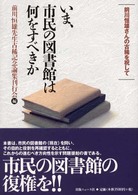Full Description
Ethnographic museums, now often rebranded as collections of 'world cultures', appear permanently problematic, even as their contexts and the orientation of their activities change. Across Europe and elsewhere, curators and other museum staff are committed to dialogue and collaboration with the peoples from whom collections were made. But their vast assemblages of artefacts, removed from countries of origin primarily during the colonial period, and assumed, mostly inaccurately, to have been looted, seem always in question.Photo-Museology arises from an art project undertaken over 25 years. From the early 1990s, Mark Adams and Nicholas Thomas together investigated sites of cross-cultural encounter in the Pacific and associated places in Europe, ranging from Captain Cook memorials to ethnographic museums. Some of those museums still exhibited colonial symbols and forms of knowledge, others had attempted to displace such histories, foregrounding more inclusive or progressive stories. Complementing the academic studies in the Pacific Presences series, this book offers what John Berger referred to as 'another way of telling'. Through photography, it revisits the places collections were made, and the places they ended up in. It is a meditation on presence and absence.








